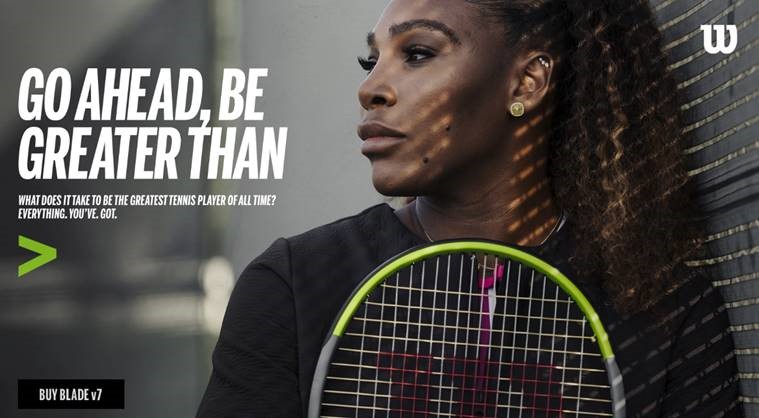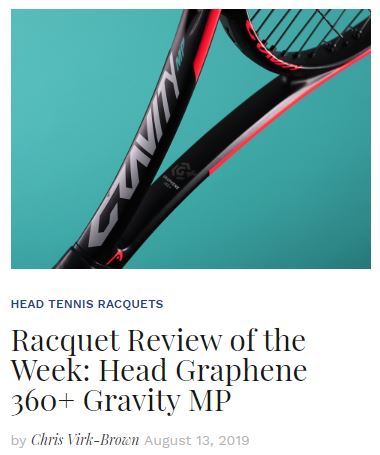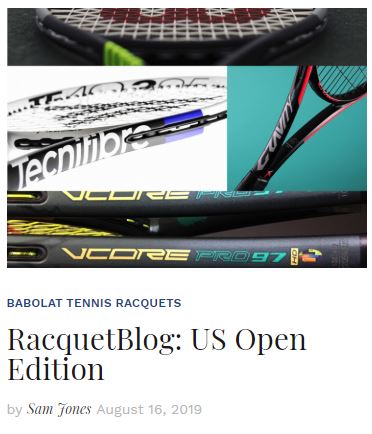With the Blade having become one of the most dominant racquet lines in the market, any update is going to be eagerly anticipated. The new Blade 98 v7 sports design language from the Clash family with the Blade’s now signature green in the place of the Clash’s red at the top of the hoop. Wilson has also removed the somewhat divisive Countervail material in favor of an evolution of the technology introduced in the Clash line. The new Blade boasts FeelFlex technology. FeelFlex utilizes strategic Carbon mapping for increased frame flexibility and stability. The result is a frame with a lower RA that doesn’t skimp on stability or pop. Wilson has also introduced a longer handle taper on this update to make it more comfortable for two handed backhand players to grip with their top hand. The new Blade is also slightly more headlight than previous versions, promising to offer improved maneuverability and swing speed. Having been on the fence about the Blade CV 16 x 19, I was eager to see if this new version could change my opinion.
Groundstrokes
From the first ball, I knew I was going to like groundstrokes with the Blade v7 16 x 19. The flat 20.6 mm beam offered a surprising amount off pop off the ground while still being incredibly easy to control. The 11.4 oz strung weight and healthy near 330 swingweight gave the racquet punching power well above its weight class. I was able to step in and crack big shots from either wing. I also felt this racquet was noticeably faster to swing than its predecessor. Whether that was the slightly more headlight balance or the fact that my previous test model had been way over spec, I’m not sure. What I will say is that I felt I had to adjust my timing with this new model much less than past versions of the Blade. The low flex and open string pattern gave the frame a large sweet spot that was very forgiving. Accuracy was excellent with this frame. I was able to target aggressive spots on court and play close to the lines with confidence. Spin production was easy to come by on both sides, which was especially helpful for my naturally flatter backhand. I also appreciated the longer grip when I went to hit a backhand. I enjoyed being able to whip up the back of a mid court ball, sending it cross court with spin that absolutely yanked it down on a dime. While the frame was a bit less stable than its 18 x 20 sibling, the 16 x 19 version more than held its own in big hitting exchanges. I also appreciated the easy speed of the frame on defense as I was able to flick down the line winners on the run with impressive consistency.
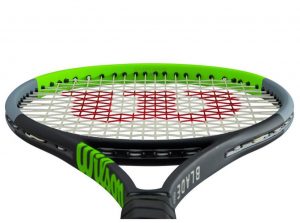
Volley & Serve
Volleys with the Blade v7 were another area I truly enjoyed. The racquet had enough power to make quick work of high balls and anything else I could attack. The frame was faster than previous versions, making it easier to snap into position during quick exchanges. The lower swingweight of the 16 x 19 model made it the faster feeling of the new Blades at net. The thin beam and flexible feel also provided excellent directional control. I was able to carve out angled volleys and direct balls into the corners of the court with ease. While the racquet was soft and flexible, I also felt it had a more connected feel than the previous Countervail version. This gave me more confidence when executing touch and drop volleys. The fast reflexes and solid swingweight also made it easy to absorb and deflect pace at the net. Overall, this model was the best Blade I’ve hit with at the front of the court.
My serve with the Blade v7 16 x 19 was an impressive improvement over my last outing with the CV Blade. The new model felt easier for me to generate the head speed needed to crack serves with plenty of pace. I was able to whip the racquet through the top of the zone with enough speed to generate a fast ball that had solid court penetration. Directional accuracy was also very impressive with this frame. I was able to easily change my serve placement and hit to all corners of the box. My second serve proved equally effective. The 16 x 19 pattern had plenty of spin for my kick serve to leap off the court and cause problems. My slice serve didn’t have quite as much bite as it did with the 18 x 20 model but I was still able to keep the ball low and moving out wide in the ad court, giving me space to attack the first ball.
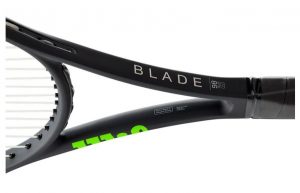
Feel/Comfort
This update with FeelFlex was a big step up in the feel department for me. While I love soft, low flex frames, I felt the previous Countervail version was too muted down and had a disconnected feel to it. This new version with FeelFlex was the better of both worlds. It had a soft, flexible response while offering improved ball feel and connection. I felt it had impressive ball pocketing while also giving me enough feel that I was confident in what the ball was doing as it left the frame. The flexible feel also made it much easier to impart touch on the ball and execute a wider variety of shots during play. I played the frame in both hybrid and full poly string setups and found it to be very comfortable with both. Players should have no problem experimenting with a wide range of string setups without comfort issues.
Longtime Blade fans should be excited about this latest update from Wilson. It boasts the same outstanding mix of power and control that has been a hallmark of the line, now with improved feel and maneuverability. Its ability to hit groundstrokes with authority, counter-punch and finish in the front court make it very unique. The Blade v7 16×19 is an excellent choice for all court players looking for a responsive, precise frame with enough spin and power to encourage offensive tactics.
 About the Author: Matt Locke formerly served for 3 years as the Junior Programs & Development Coordinator for USTA-Idaho. He is a PTR certified coach and is an active USTA 4.5+ League and Tournament player. He loves Nadal’s determination, but secretly wishes he had Federer’s effortless style.
About the Author: Matt Locke formerly served for 3 years as the Junior Programs & Development Coordinator for USTA-Idaho. He is a PTR certified coach and is an active USTA 4.5+ League and Tournament player. He loves Nadal’s determination, but secretly wishes he had Federer’s effortless style.
For More:


